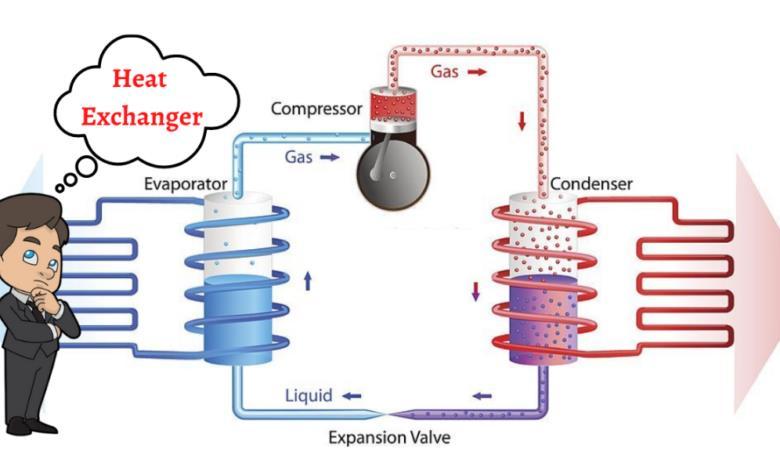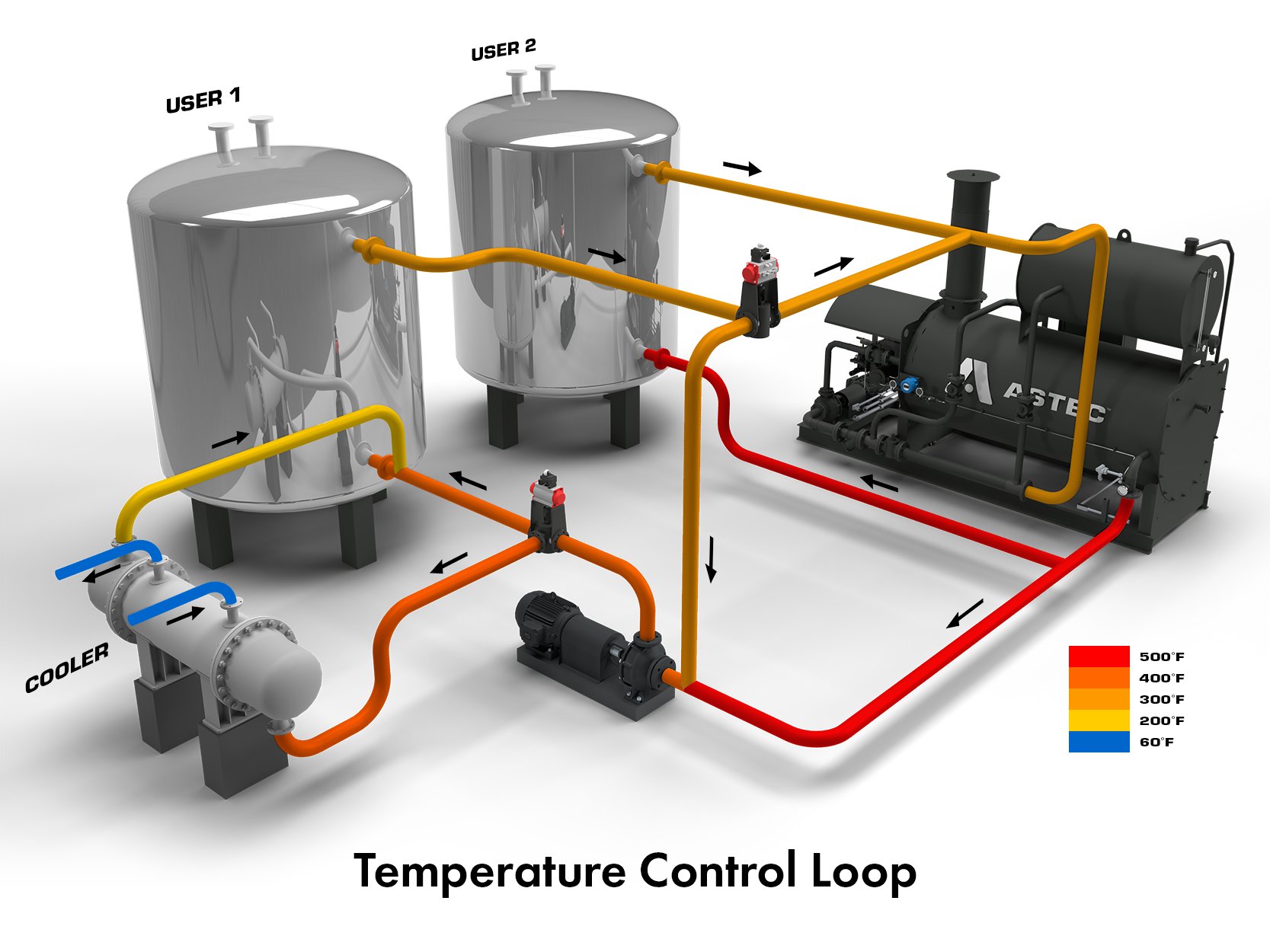A Comprehensive Guide to Choosing the Right Heat Transfer Solutions for Your Requirements
Selecting the appropriate Heat transfer system is necessary for operational effectiveness. Various systems deal with various demands, affected by variables such as temperature level array and fluid kind. Understanding the concepts behind Heat transfer, such as radiation, transmission, and convection, is vital. Additionally, reviewing energy sources and upkeep methods can affect long-term efficiency. A closer evaluation of these factors to consider exposes just how to customize a system to specific needs. What should one prioritize in this facility decision-making procedure?
Comprehending Heat Transfer: Trick Ideas and Principles
Although Heat transfer might look like a simple principle, it incorporates a series of concepts that are essential for efficient system design. Comprehending these principles is essential for designers and designers that intend to maximize thermal performance in different applications. Conduction, for example, includes the transfer of Heat via strong products, while convection refers to the activity of Heat within liquids. Radiation, one more key principle, defines just how Heat can be moved through electro-magnetic waves. Each of these mechanisms plays an important duty in identifying just how energy moves within a system. By thoroughly understanding these concepts, specialists can make enlightened choices, making sure that Heat transfer systems run successfully and meet the details demands of their applications
Kinds of Heat Transfer Equipments: A Summary
Recognizing the concepts of Heat transfer lays the groundwork for exploring the various types of Heat transfer systems offered. Heat transfer systems can be categorized largely right into 3 kinds: conduction, convection, and radiation. Conduction entails Heat transfer through solid products, depending on direct get in touch with in between fragments. Convection, on the other hand, happens in liquids (liquids and gases) where the movement of the liquid itself helps with Heat transfer. Radiation entails the transfer of Heat through electromagnetic waves and does not require a tool, permitting it to take place in a vacuum cleaner. Each kind of system has unique characteristics and applications, making it necessary for people and companies to thoroughly evaluate their details requirements when selecting one of the most ideal Heat transfer option.
Applications of Heat Transfer Systems in Different Industries
Heat transfer systems play a crucial duty throughout different sectors, affecting effectiveness and item high quality. In industrial production procedures, they assist in precise temperature control, while in food and drink processing, they guarantee safety and conservation. Additionally, cooling and heating and climate control systems count greatly on effective Heat transfer to maintain comfortable environments.
Industrial Manufacturing Processes

Many commercial production procedures depend greatly on efficient Heat transfer systems to optimize efficiency and boost product quality. In markets such as metalworking, Heat exchangers play a vital function in keeping suitable temperature levels during welding, spreading, and forging. These systems assure uniform Heat distribution, which is vital for accomplishing desired product residential or commercial properties. In a similar way, in the chemical manufacturing industry, Heat transfer systems promote specific temperature control during responses, affecting return and safety and security. Moreover, in textile production, efficient Heat monitoring is very important for coloring and finishing processes, influencing color uniformity and material quality. By choosing suitable Heat transfer innovations, producers can improve energy performance and reduce operational expenses, ultimately bring about a more competitive and sustainable manufacturing environment.
Food and Beverage Handling
Reliable Heat transfer systems are equally vital in the food and drink handling market, where keeping perfect temperatures is critical for food security and quality. These systems play a vital duty in processes such as sterilization, cooking, and pasteurization, making certain that items are risk-free for usage and maintain their dietary worth. Heat exchangers, for instance, efficiently move Heat in between fluids, enhancing energy use while reducing temperature level changes. In addition, refrigeration systems are fundamental for extending and maintaining disposable items service life. The choice of Heat transfer innovation straight impacts operational performance and item honesty, making it vital for food and drink suppliers to choose the ideal systems tailored to their specific processing requirements. This mindful choice eventually adds to customer complete satisfaction and food safety.

Cooling And Heating and Climate Control
While numerous markets rely on Heat transfer systems for efficiency, COOLING AND HEATING (Heating, Air Flow, and Cooling) plays an essential duty in keeping interior environment control across various setups. These systems make use of Heat transfer principles to regulate air, moisture, and temperature top quality, guaranteeing comfort and security in residential, industrial, and commercial settings. Correctly designed a/c systems improve energy performance, minimize operational costs, and decrease environmental impact. In industrial structures, as an example, effective environment control adds to worker performance and client fulfillment. In commercial applications, heating and cooling systems assist preserve suitable conditions for devices procedure and item preservation. Picking the appropriate Heat transfer system is important for conference details climate control needs and attaining overall system efficiency.
Evaluating Energy Resources for Heat Transfer Solutions
In assessing energy sources for Heat transfer systems, a contrast of eco-friendly energy choices and fossil gas considerations is essential. Renewable sources, such as solar and wind, deal lasting options that can reduce ecological effect. On the other hand, nonrenewable fuel sources continue to be common due to their established facilities and power thickness, motivating a mindful analysis of both choices.
Renewable Resource Options

Fossil Fuel Factors To Consider
Examining nonrenewable fuel source factors to consider is essential for the effectiveness and sustainability of Heat transfer systems. Nonrenewable fuel sources, such as natural gas, oil, and coal, are standard energy sources that More hints supply considerable Heat output, making them preferred choices for domestic and industrial applications. Their ecological impact, consisting of greenhouse gas emissions and source depletion, increases issues. When selecting a warmth transfer system, it is essential to evaluate the schedule, price, and regulatory elements related to these gas. Additionally, the efficiency of fossil fuel systems must be considered, as greater efficiency can reduce some ecological downsides. Ultimately, a balanced approach weighing performance and sustainability can assist decision-makers towards the most proper Heat transfer solution for their next page particular demands.
Aspects to Take Into Consideration When Picking a Warmth Transfer System
Choosing a proper Heat transfer system needs careful factor to consider of different factors that can substantially impact effectiveness and performance. One essential factor is the operating temperature level array, which determines the materials and style appropriate for the application. Additionally, the kind of liquid utilized in the system-- whether gas or liquid-- affects Heat transfer efficiency and compatibility. The system's size and capability need to straighten with the certain needs of the operation to prevent ineffectiveness. Energy source availability is likewise essential, affecting operating expense and sustainability. Additionally, the setup setting, including space constraints and ease of access for maintenance, plays a substantial function in system selection. Regulative compliance and safety requirements have to be thought about to guarantee the system satisfies all legal demands.
Upkeep and Performance Optimization for Heat Transfer Solutions
Maintaining Heat transfer systems is important for making sure optimal efficiency and long life. Normal maintenance activities, such as cleansing Heat exchangers and evaluating insulation, aid protect against effectiveness losses because of fouling and thermal bridging. In addition, checking system criteria, including stress and temperature, enables early detection of abnormalities, minimizing downtime and pricey repairs. Implementing a preventative upkeep routine can maximize performance and extend the lifespan of parts. Updating to advanced control systems can enhance functional efficiency by changing to varying lots and problems. By focusing on maintenance and efficiency optimization, operators can accomplish minimized energy intake, reduced functional prices, and boosted general system reliability, ultimately bring about much better source utilization and an extra sustainable operation.
Future Patterns in Heat Transfer Technologies
As sectors significantly focus on sustainability and energy effectiveness, future trends in Heat transfer innovations are set to go through considerable transformations. Technologies such as advanced products, consisting of carbon nanotubes and nanofluids, promise improved thermal conductivity and performance. Furthermore, the assimilation of renewable power sources right into Heat transfer systems is getting momentum, advertising environmentally friendly services. Smart technologies, consisting of IoT sensors, are expected to transform monitoring and control, making it possible for real-time information analysis for optimized efficiency. The advancement of modular and compact systems will certainly facilitate easier setup and maintenance, catering to diverse applications. These developments show a shift towards even more lasting, efficient, and versatile Heat transfer options, aligning with worldwide energy goals and ecological criteria.
Often Asked Questions
What Are the Ecological Influences of Heat Transfer Equipments?
The environmental effects of Heat transfer systems can consist of greenhouse gas discharges, power consumption, and potential thermal air pollution. In addition, incorrect disposal of materials and ineffectiveness can contribute to source depletion and environment interruption.
How Do I Calculate the Cost-Effectiveness of a Warm Transfer System?
To calculate the cost-effectiveness of a warm transfer system, one have to assess first costs, functional expenses, upkeep requirements, and energy performance, comparing these variables versus the anticipated lifespan and performance of the system.
Can Heat Transfer Systems Be Utilized in Residential Settings?
Heat transfer systems can indeed be utilized in household setups. They provide efficient home heating and cooling down options, making homes extra comfy while potentially lowering energy expenses. Their convenience permits for various applications in property atmospheres.
What Safety And Security Rules Put On Heat Transfer Equipments?
Safety laws for Heat transfer systems normally consist of guidelines visit homepage on upkeep, procedure, and installation. Compliance with local structure codes, producer specs, and sector requirements is important to ensure risk-free and reliable system efficiency in numerous applications.
Just How Do Various Materials Affect Heat Transfer Efficiency?

Transmission, for instance, includes the transfer of Heat with solid products, while convection refers to the activity of Heat within fluids. Understanding the concepts of Heat transfer lays the groundwork for checking out the numerous kinds of Heat transfer systems available. Heat exchangers, for circumstances, effectively transfer Heat between fluids, maximizing energy use while reducing temperature level changes. In examining power resources for Heat transfer systems, a comparison of renewable power options and fossil gas considerations is crucial. Metals, such as copper and aluminum, conduct Heat properly, whereas insulators like rubber and glass reduce down Heat circulation.